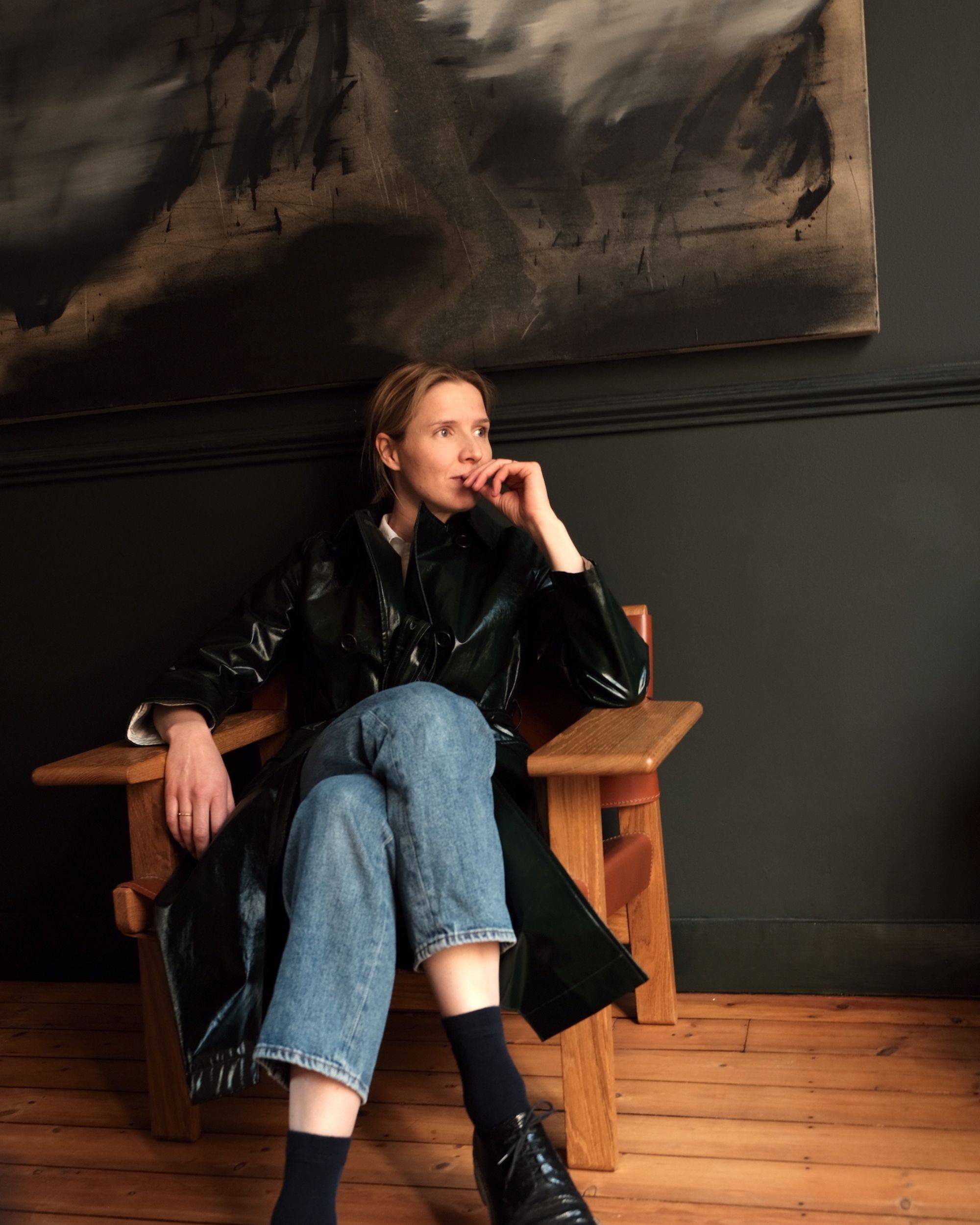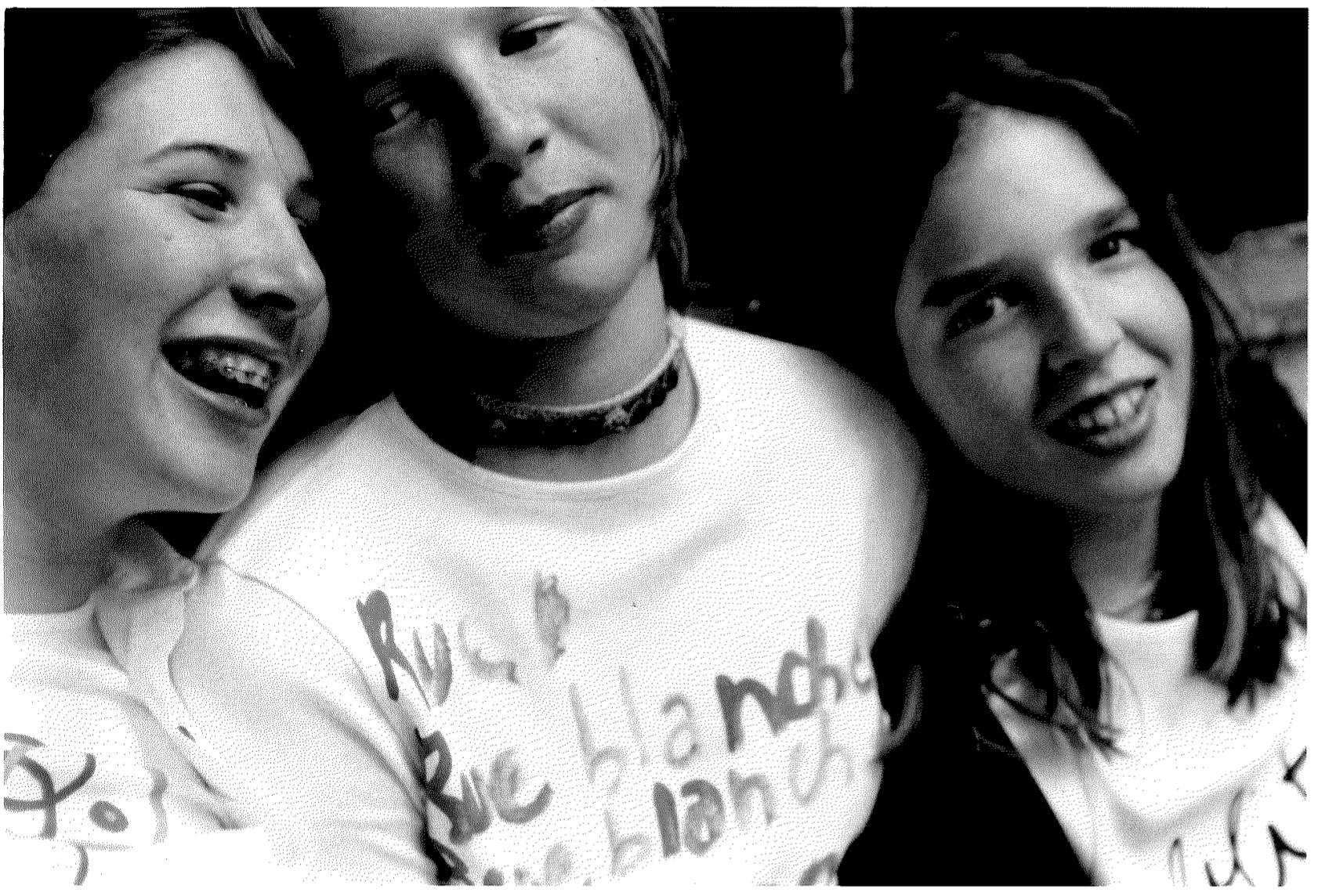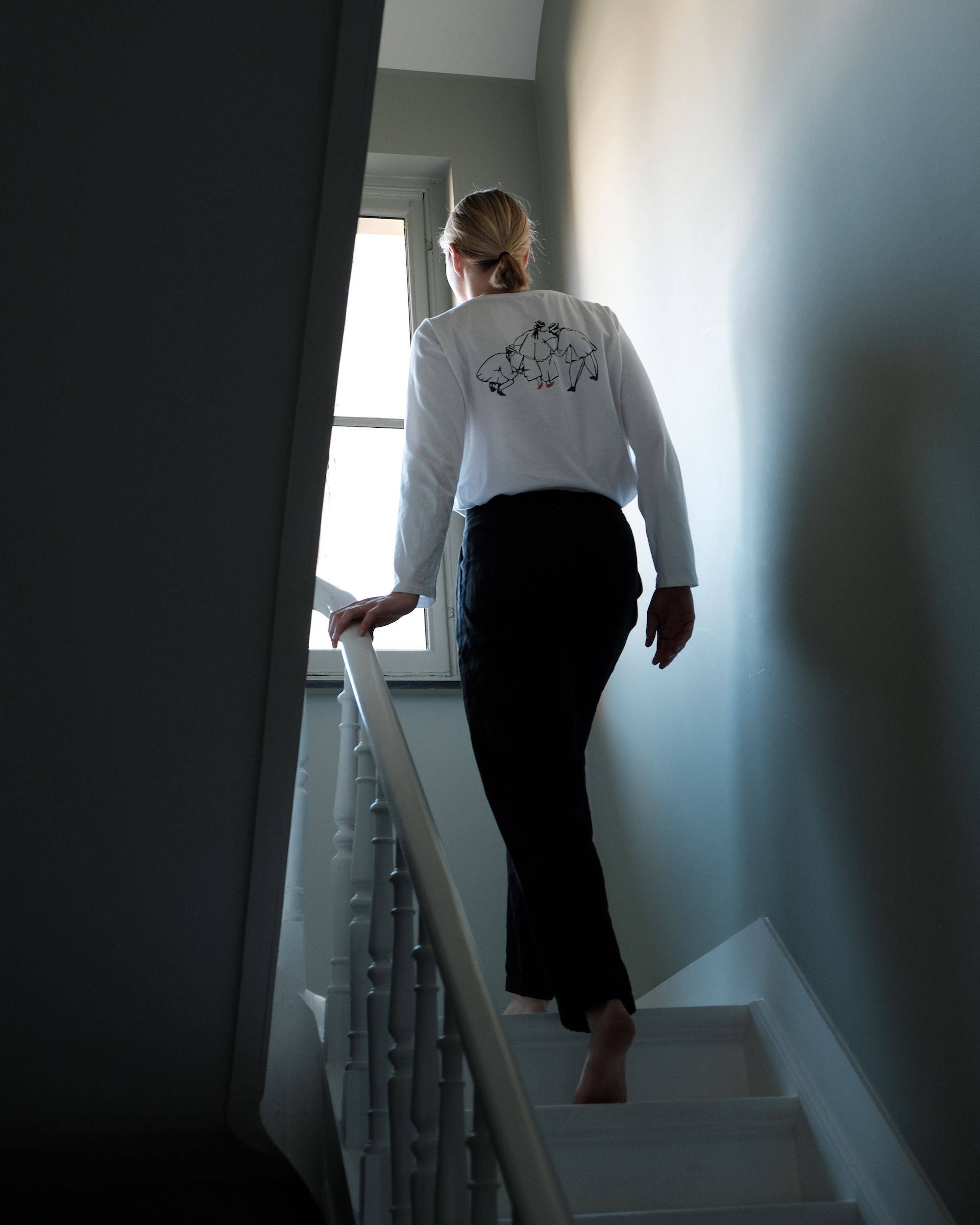An interview with
Astrid regout
Astrid Regout (CEO) is from a family of fashion entrepreneurs – her mother Marie-Chantal founded Rue Blanche, and her uncle Patrick founded Bellerose. Hardly surprising, then, that Astrid and her sister Aude took over the creative direction of the company in 2016. When we sit down with Astrid at the tail end of winter, our conversation soon turns to the subject of the archive: her personal relationship to it, and the innovative ways to (de)reconstruct past designs.

Astrid, you and your sister Aude are second-generation garment makers. What did you want to change when you took over Rue Blanche from your mother eight years ago?
Our mother founded Rue Blanche in 1987, so Aude and I got our first pieces when we were twelve. Certain items, we still cherish to this day. This was also the feedback we got from customers: that Rue Blanche is loved for a long time. Sometimes generations! We understood that this was not only special, but also very important. So when we took over the company, we definitely wanted to hold on to this, to keep creating clothes with a lasting appeal.

A scan from an old rue blanche campaign, with cousin Natasha, Astrid, and Aude (from left to right).
How do you modernise, while keeping the aspect of timelessness intact?
Each collection starts from a careful analysis of the previous one. After each season, we look at what sold well, and what didn’t, and we make a point of asking our sales advisors how they perceived the collection, as they have the best insight into our customers’ wants. Another important element is our fabrics. Rue Blanche always focussed on quality and durability. We believe our customers know this, and expect a certain level of excellence from us.
What is Rue Blanche's connection with fashion?
There has to be a correct reading of fashion and an adequate response to it. Finding the right balance is complex. We always had very loyal customers, and we are known as a brand, so that affords us a certain degree of stability. However, we have to make sure we don't become stuffy in people’s minds. It's a constant consideration every heritage brand deals with. In the end, we believe in a very simple idea: that relevant clothes are clothes that are loved. This makes us respond to trends in an independent “Rue Blanche” way, and always with our customers’ needs in mind.
A sweater from the early beginning of Rue Blanche, showing the original logo.
"The drawing shows three women – one stitching, one sewing, and one fitting a garment – and it represent the people that founded the brand. I'd love to think it’s my mother with Aude and I."
How does a design come to life in the studio?
Every season, our designers develop new pieces, but staple items are also revisited. We look at the numbers. Great designs that were appreciated may be reintroduced, tweaked, and made in another fabric. In that way, having a 38-year old archive is a powerful repository of beauty and knowledge. I personally love seeing a design come back!
Let’s talk about the archive! What is the one piece you will save from a fire?
One piece, only one? That’s an unfair proposition, but I'll go with it (laughs). Coats have always been my weak spot, so I guess it would have to be the lacquered green trench. A gorgeous piece I fell in love with, the very second I first saw it. I adore the fit, and the fabric is sublime, inside and out! I am also very fond of the old Rue Blanche logo. The drawing shows three women – one stitching, one sewing, and one fitting a garment – and it represent the people that founded the brand. I'd love to think it’s my mother with Aude and I (smiles).
Astrid Regout, in her house in Brussels.
The trench of autumn winter 2017
"There has to be a correct reading of fashion and an adequate response to it. It's a constant consideration every heritage brand deals with."

White, long-sleeved T-shirt with the original Rue Blanche logo, 1989.

Returning to the brand's origins, Rue Blanche brought the logo'ed white tee back, 2022.
What is your favourite campaign image of all time?
There is this one campaign shoot that we always go back to when we work on new campaigns, it is the spring summer of 1999, photographed by Serge Leblon. He has such a lyrical approach to photography, making his style very filmesque. For me, he is one of the best Belgian photographic storytellers around, and his pictures just carry this inherent mystery that makes you wonder about the woman in the pictures. His female subjects always inspire an immediate interest and intrigue. I love that campaign!
Where was it shot?
It was shot in late 90’s New York City. The images still feel contemporary. The colours, the silhouettes, the scenes, ... Timeless, in fact! Browsing through these images is a beautiful reminder that so many things we created are still relevant.
Campaign lookbook of the spring summer of 1999.
Campaign lookbook of the spring summer of 1999.
"There is this one campaign shoot that we always go back to when we work on new campaigns, it is the spring summer of 1999, photographed by Serge Leblon."
Campaign image from the spring summer collection of 1998.
Framed campaign images from the 80's till now.
You say Rue Blanche aims to design timeless pieces. What does timelessness mean for you personally?
For me a classic staple can’t be dated to a particular season and has a lasting appeal. Part of the secret lies in the shapes and the colours of a garment. I never regret investing in timeless, sharp, and understated pieces that stand the test of time. A good Rue Blanche example would be the boat neck, for me personally. These knits have been in the collections for decades: throughout many reincarnations, they were always there! When then stripes are added to them, it becomes the ultimate classic for me. I wear it to death.
Cotton knits from the 90's archive.
Astrid Regout (wearing the SS16 Ultralux stripes boatneck) with her son.
